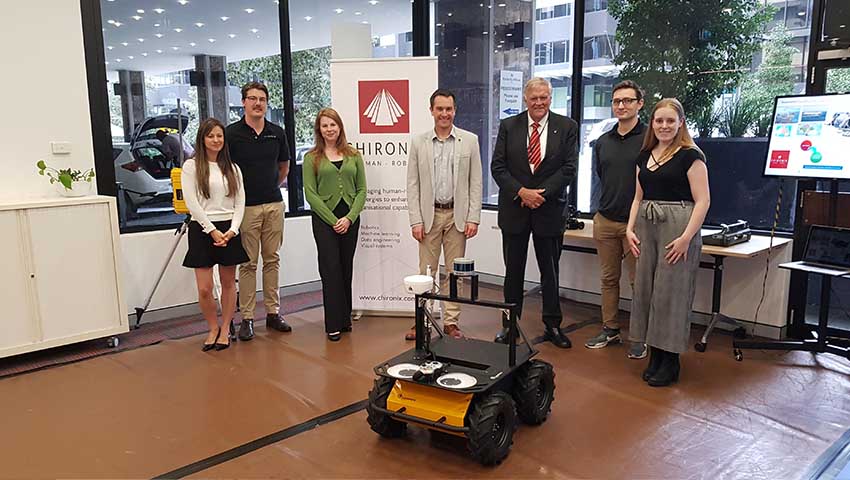Perth-based Chironix has secured a contract with the US Office of Naval Research (ONR) to develop and demonstrate a technology system that will significantly improve outcomes for casualties in the field.
Chironix will utilise its robotics expertise to transport a medical litter on an autonomous ground vehicle to facilitate the saving of lives in the field. In addition, Chironix will use Glass Enterprise Edition to connect medical physicians at the hospital to field personnel to extend the level of care available to casualties in conflict zones.
Chironix developed autonomous systems that will be executed on an unmanned ground vehicle (UGV) for navigating unstructured terrains, difficult gradients and challenging environments. This autonomous robotic vehicle will transport a person on a NATO grade stretcher to receive critical care.
This allows patients in the field to receive necessary medical attention while being transported to a medical node in dangerous environments. The project is named after the Anzac stretcher bearer, Jack Simpson, in order to memorialise the importance of saving lives as part of Project Simpson for ONR.
It is significant that Chironix will be able to demonstrate automated care that includes transmission of vital signs to key medical and military personnel while navigating in nontrivial environments autonomously. The technological impact is underlined by wearable vital signs monitoring, UGV GPS/localisation and integration with cutting-edge technology.
Daniel Milford, Chironix’s founder and managing director, said, "As a technology scale-up company with a clear strategy for the defence industry, this is a significant contract for Chironix."
The first simulation of this new contract with the ONR will occur in June with a series of wearable technology integration to enhance situational awareness. This will then be followed by medical systems integration with autonomous robots later in 2019. The UGVs will operate robotics software for autonomous navigation in unstructured terrain.
"We are looking forward to applying the team’s robotics and software engineering skills to a project that will optimise the patient care process and empower medical first responders in the field," Milford added.
Chironix also developed a flagship application to increase communication between mobile working teams through a heads-up display on Glass Enterprise Edition to enable personnel to access work orders and instructions via voice on-demand. This assists the user in their cognitive loading, which, when coupled with the Chironix video conferencing system, enhances the effectiveness of mobile personnel by enabling them to collaborate with peers in real time.
Metis is an application for Glass Enterprise Edition by Google X that provides the medic’s point of view on-location to offsite physicians, developed by Chironix. Emergency technicians and ER medical doctors in hospitals can tele-conference with field medics to extend their expertise as needed on the cloud application.
Chironix has successfully integrated Glass Enterprise Edition with a range of other wearable medical devices, enabling the wearer to see in real time the status of the various patients that they are treating. This provides enhanced situational awareness about circulation, cardiovascular systems and critical conditions. Metis allows seamless integration with voice-activation for medical workers who need to operate and monitor patients with use of their hands while wearing Glass Enterprise Edition.
Chironix has also been selected as a grant award recipient of the prestigious San Francisco Australia Unlimited & AusTrade Dual Civilian and Defence Landing Pad. This program gives curated access to select mentor networks, strategic relationships and entrepreneur resources to drive growth.
The Chironix robotics solution enables military and civilians in the field to automate the recovery process while utilising UGVs for medium to high payload carriage, especially in unforgiving terrains in war zones.



